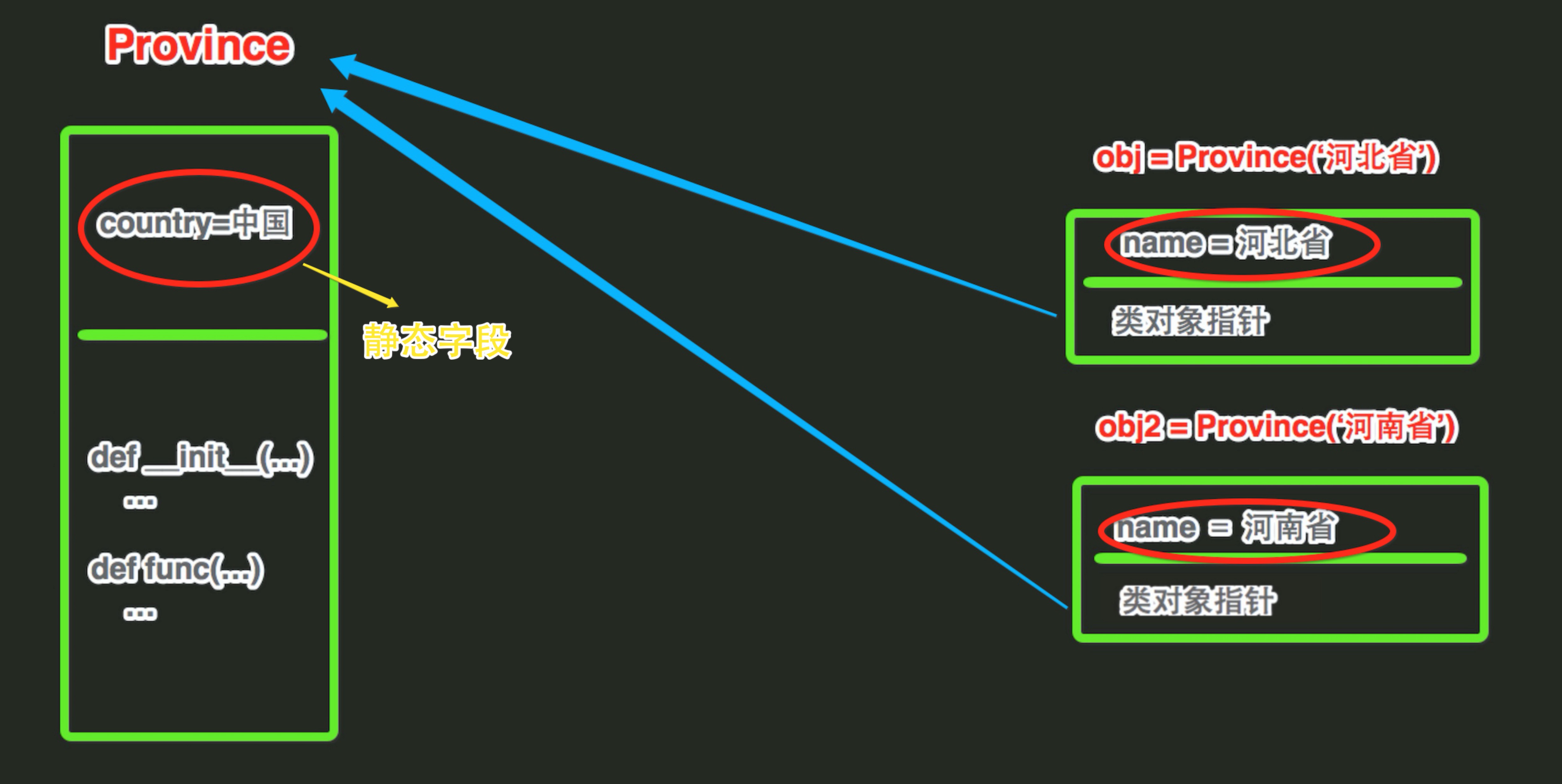python對象反射和函數反射
阿新 • • 發佈:2017-11-30
它的 就是 pac mouseover 打印 ges print -h func
python的對象反射功能,經常在編程時使用.相比較其它的編程語言使用非常方便.反射就是用字符串來操作對象或者類,模塊中的成員.

一.對象的反射
反射功能的實現,由這4個內置函數來實現(hasattr, getattr, setattr, delattr)
1.1.hasattr判斷是否有某個成員
判斷對象中是否有屬性, 方法.返回bool值
| 1 2 3 4 5 6 7 8 9 10 11 12 13 14 15 16 17 18 19 20 |
#!/usr/bin/env python
# -*-coding:utf-8-*-
class Foo(object):
country = "china"
def __init__(self, name):
self.name = name
def f(self):
print "function f"
obj = Foo("abc")
print hasattr(obj, "name") #判斷是否有name字段,返回True |
上例中使用對象作為obj參數來判斷,是否有類的靜態方法.也是可以的.因為對象的特殊性,先在對象中找是否有該成員,如果沒在,通過對象指針,在去創建這個對象的類中找查
執行結果
| 1 2 3 4 5 6 7 | True True False True True class: [‘__module__‘, ‘f‘, ‘country‘, ‘__dict__‘, ‘__weakref__‘, ‘__doc__‘, ‘__init__‘] obj: [‘name‘] |
1.2.獲取對象的成員
也可以使用對象來獲取類的成員.和上例中的hasattr一樣
| 1 2 3 4 5 6 7 8 9 10 11 12 13 14 15 16 17 18 | #!/usr/bin/env python # -*-coding:utf-8-*- class Foo(object): country = "china" def __init__(self, name): self.name = name def f(self): print "this is function = ", self.name obj = Foo("abc") print getattr(obj, "name") #獲取對象的name字段 f = getattr(obj, "f") #通過對象獲取類的方法 print f #打印出來是信類的方法 f() #加上括號就能直接調用執行這個的方法 print getattr(Foo, "country") print getattr(obj, "country") #使用對象也能找到靜態字段 |
1.3.增加對象或者類的成員
動態的增加對象或者類中的成員
| 1 2 3 4 5 6 7 8 9 10 11 12 13 14 15 16 17 18 19 20 | #!/usr/bin/env python # -*-coding:utf-8-*- class Foo(object): country = "china" def __init__(self, name): self.name = name def f(self): print "this is function f.name = ", self.name obj = Foo("abc") setattr(obj, "age", 19) #增加普通字段 setattr(obj, "show", lambda num: num +1) #增加普通方法 setattr(Foo, "tel", "+086") #增加靜態字段 print obj.age print Foo.tel print obj.show(10) |
執行結果
| 1 2 3 | 19 +086 11 |
1.4.使用delattr動態的刪除類或者方法成員
演示代碼
| 1 2 3 4 5 6 7 8 9 10 11 12 13 14 15 16 17 18 19 20 | #!/usr/bin/env python # -*-coding:utf-8-*- class Foo(object): country = "china" def __init__(self, name): self.name = name def f(self): print "this is function f.name = ", self.name obj = Foo("abc") print getattr(obj, "name") delattr(obj, "name") #刪除掉了對象的普通字段name print getattr(obj, "name") print getattr(Foo, "country") delattr(Foo, "country") #刪除掉類的靜態字段 print getattr(Foo, "country") #打印時說找不到些成員,報錯 |
執行結果
| 1 2 3 4 5 | Traceback (most recent call last): File "D:/????/python/????????/day08/blog/fanshe.py", line 17, in <module> abc print getattr(obj, "name") AttributeError: ‘Foo‘ object has no attribute ‘name‘ |
二.在當前模塊中使用反射
獲取到對應的模塊.
| 1 2 3 4 5 6 7 8 9 10 11 12 13 14 15 | #!/usr/bin/env python # -*-coding:utf-8-*- import sys data = "abc" def f1(): print "f1 function" def f2(): print "f2" this_module = sys.modules[__name__] print hasattr(this_module, "data") #使用反射 f1_get = getattr(this_module, "f1") #使用反射獲取 f1_get() |
以上是反射對類,對象,模塊成員操作的基本方法.
三.使用字符串自動導入模塊
依據傳入的字符串,自動導入模塊.類似上文的方法反射
| 1 2 3 4 5 6 7 | import importlib my_moudle_name = "lib.aa" aa = importlib.import_module(my_moudle_name) print(aa) print(aa.C().name) |
執行結果
| 1 2 | <module ‘lib.aa‘ from ‘D:\\python\\day10\\lib\\aa.py‘> ait24 |
python對象反射和函數反射
